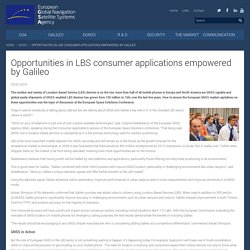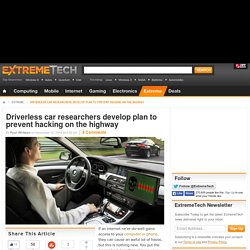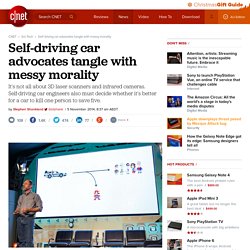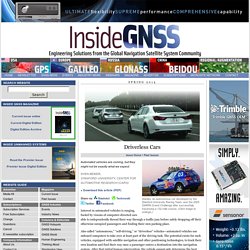

Opportunities in LBS consumer applications empowered by Galileo. The number and variety of Location Based Service (LBS) devices is on the rise: more than half of all mobile phones in Europe and North America are GNSS capable and global yearly shipments of GNSS-enabled LBS devices has grown from 150 million to 1bln over the last five years.

How to ensure the European GNSS market capitalises on these opportunities was the topic of discussion at the European Space Solutions Conference. Galileo_pp_gallant.pdf. GNSS: In Pole Position. Less than 50 years ago, the concept of satellite positioning didn't exist.

Today, global navigation satellite systems have become inextricably intertwined with national security and infrastructure, international relations and our daily lives. Here’s a look at the route that got us here, and some of the obstacles and solutions on the road ahead, including the huge potential of integrating GNSS with other technologies — both old and new. Driverless car researchers develop plan to prevent hacking on the highway. If an internet ne’er-do-well gains access to your computer or phone, they can cause an awful lot of havoc, but this is nothing new.

You put the pieces back together, change your passwords, and go on with your life. Intertraffic World - 2015 Showcase. Tesla’s Autonomous Car Claims More Hype Than Reality. Google’s Self-Driving Cars Still Face Many Obstacles. All Cars On Market To Be Autonomous By 2046, Says Morgan Stanley analyst. 4 photos Adam Jonas, an analyst at Morgan Stanley, estimates that all cars for sale in 2046 will be completely autonomous, in a statement for the Huffington Post. 2026 is the estimate as to when autonomous cars will be launched on the market, with 20 years required for the sale of these cars until they are dominant in the automotive industry.

Due to the presence of autonomous vehicles on the roads in 2046, Jonas expects 5.6 trillions of dollars to be saved at a global level by eliminating road deaths, accidents and material losses caused generally by human drivers. By 2026, the analyst expects to see cars with autonomous functions that allow driver intervention, and complete control of it in the event that the infrastructure is not adapted to autonomous management. Self Driving Cars Infographic photo - Automoblog.net. Oh the Places We'll Go! The transportation systems around which the modern world has been built are on the verge of a significant transformation.

Intelligent transportation systems (ITS) are making driving and traffic management better and safer for everyone. Transportation typifies the Future- Structure framework. Soft infrastructure — the realm of concepts, policies and legislation — is rapidly evolving to accommodate the demand for global investment in hard transportation infrastructure. Technology is bridging the two as vehicles and the infrastructure on which they operate become increasingly connected. Self-driving car advocates tangle with messy morality. It's not all about 3D laser scanners and infrared cameras.

Self-driving car engineers also must decide whether it's better for a car to kill one person to save five. DUBLIN, Ireland -- Sure, dealing with lane changes, firetrucks and construction projects is difficult for engineers building self-driving cars. Principles of GNSS, Inertial, and Multisensor Integrated Navigation Systems ... - Paul D. Groves. Improving navigation for groups of autonomous guided vehicles. 19 September 2014, SPIE Newsroom.

DOI: 10.1117/2.1201409.005593 Global navigation satellite systems (GNSS), including the well-known Global Positioning System, are widely used for localization purposes. In these systems, radio signals are transmitted from orbiting satellites. The received signals are used to derive the range (i.e., distance) to the individual satellites. The precise location of the user can then be determined through triangulation methods. Driverless Cars. Stanley, an autonomous car developed by the Stanford University Racing Team, won the 2005 DARPA Grand Challenge after successfully traversing a 132-mile course.

(Click image to enlarge.) Automated vehicles are coming, but they might not be exactly what we expect. Sven Beiker,Stanford University, Center for Automotive Research (CARS) Google Car : le problème, c’est l’homme ! Chris Urmson, le responsable du programme de voiture autonome de Google, a récemment présenté les résultats de deux études portant sur les données issues des véhicules autonomes autorisés à circuler en Californie et au Nevada (toujours avec un pilote prêt à en reprendre le contrôle), rapporte Tom Simonite pour la Technology Review.

La première a montré que lorsqu’un homme était au volant, les accélérations et les freinages étaient plus brutaux que lorsque l’ordinateur conduisait. La seconde a montré que le logiciel des voitures savait bien mieux respecter les distances de sécurité entre véhicules que les humains. Rien de surprenant me direz-vous… Et Urmson de fanfaronner sur la scène de la conférence RoboBusiness qui se tenait à Santa Clara en Californie : “Nos voitures sont conduites plus en douceur et de manière plus sûre que ne le font des chauffeurs professionnels qualifiés”. Proxy-pubminefi.diffusion.finances.gouv.fr/pub/document/18/17721.pdf.
Les voitures sans conducteur en France, c'est pour quand ? Par Louis San Mis à jour le , publié le Alors que quelques Etats américains ont déjà franchi le pas avec les Google Car, le gouvernement britannique a donné son feu vert, mercredi 30 juillet, à des essais de voitures sans conducteur sur la voie publique.

Elles seront testées dès janvier 2015, pour une période de 18 à 36 mois, dans trois villes qui n'ont pas encore été choisies. Cela peut ressembler à de la science-fiction mais le ministère des Transports britannique comptait, à l'origine, commencer les expérimentations sur route dès 2013. Qu'en est-il en France ?